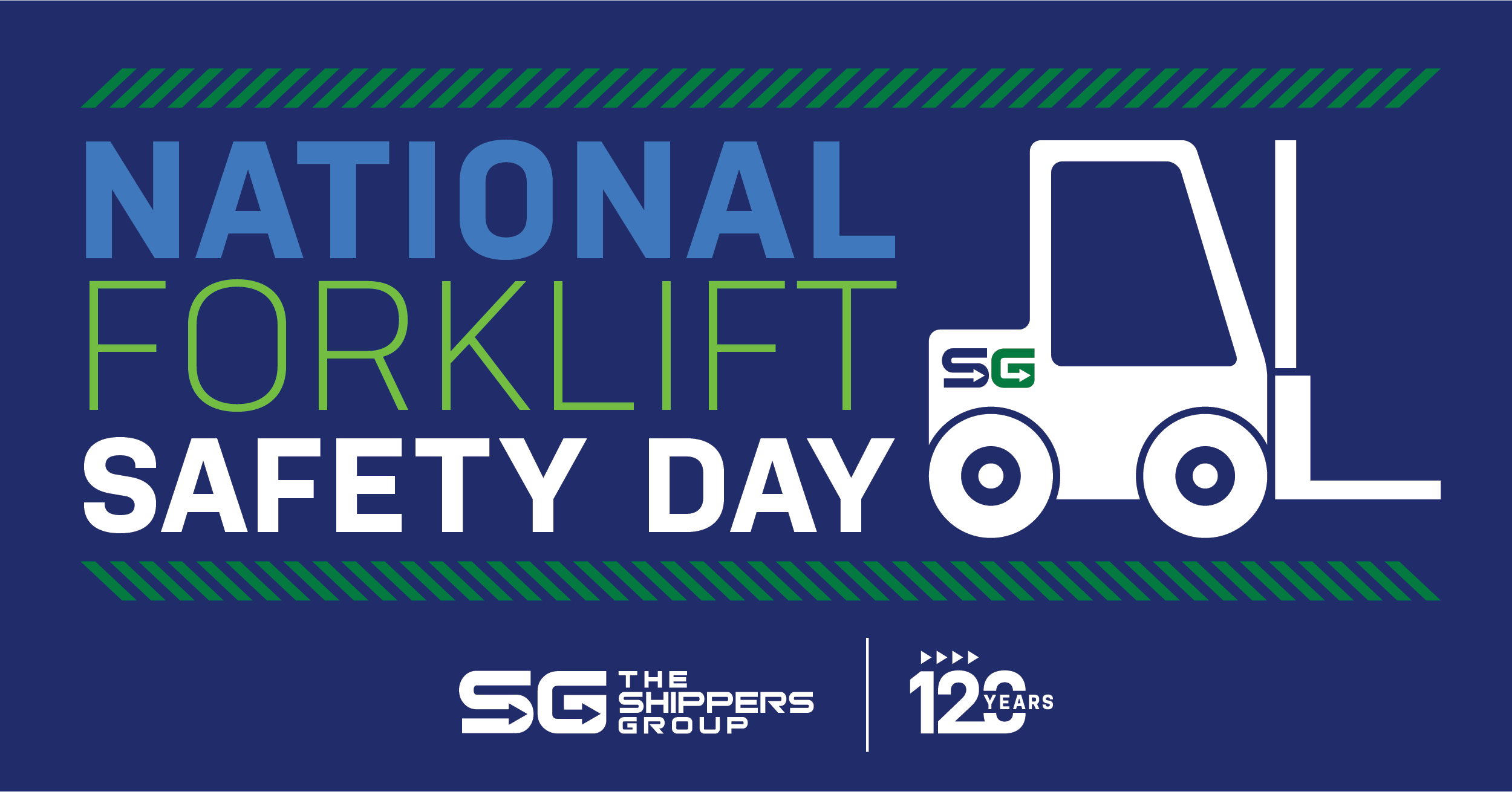Today is National Forklift Safety Day, a day which is recognized every year to reinforce the importance of operator safety training and forklift safety practices. As safety is one of our core values and our #1 priority, today and throughout the entire month of June, The Shippers Group is highlighting the importance of forklift training and best safety practices.

Today we are focusing on how to reduce the potential for injury and damage while operating forklifts. Here are five common safety hazards when operating a forklift, and tips on handling the machinery safely:
1. Workplace ConditionsPhysical conditions in the workplace can lead to forklift accidents. Consider the surrounding area and avoid any potential hazards, including bumps, holes, trash, obstacles, or wet spots. Stay aware of your height and know what’s above you before you raise your forks. Look carefully for pedestrians, as they have the right-of-way, and never allow anyone to get between your lift and any solid object.
2. Restricted Visibility
A forklift operator’s vision is always restricted—whether they are carrying a load or not. Always be conscious of blind spots, and make sure to check behind and around the piece of equipment for pedestrians and other traffic before moving. Never travel with an obstructed view.
3. Center of Gravity
Almost all counterbalanced powered industrial trucks have a three-point suspension system, even if the vehicle has four wheels. This three-point support forms a triangle called the stability triangle. When the lift/load combination falls within the stability triangle, the vehicle is stable. However, if it falls outside of the stability triangle, the lift becomes unstable and can tip over.
To prevent lifts from becoming unstable, never exceed the capacity of the forklift. Center the forks to evenly distribute the weight of the load and make sure the load is balanced and secure.
Always make sure the load is the safe traveling height before moving (usually two to four inches above the floor).
4. Steering differences
Whereas automobiles use their front wheels to steer, a forklift uses its rear wheels to steer. This allows the forklift to turn in a much tighter radius, but because of it, the forklift will swing when turning corners. Be conscious of your surroundings and ensure that the rear end swings clear of racking, materials, and pedestrians when turning corners or maneuvering in aisles or tight places.
5. Battery Handling and Charging
Batteries contain sulfuric acid that is highly corrosive and during the charging process, batteries can give off highly explosive hydrogen fumes. In addition to personal harm, improper practices can result in damage to batteries and equipment.
Always follow your company and facility procedures, along with the manufacturer’s instructions for proper operation of the equipment. Battery handling processes should only be completed by trained and authorized personnel. Authorized personnel should be trained in charging procedures and in emergency procedures.
To safely operate a forklift, you must understand the equipment and your work area, and you must know how to work safely under all the conditions you encounter. The safety hazards listed above are only a few of many, so it is important to conduct in-depth forklift training on a routine basis and to explore what more can be done to reduce the potential for injury and damage.
The Shippers Group is a leading national third-party logistics company headquartered in Dallas, Texas with distribution facilities in Texas, Georgia, California, Illinois, Florida, and Virginia totaling 16 locations and over 6.5 million square feet of space. To learn more about our areas of expertise, visit our Services page.

